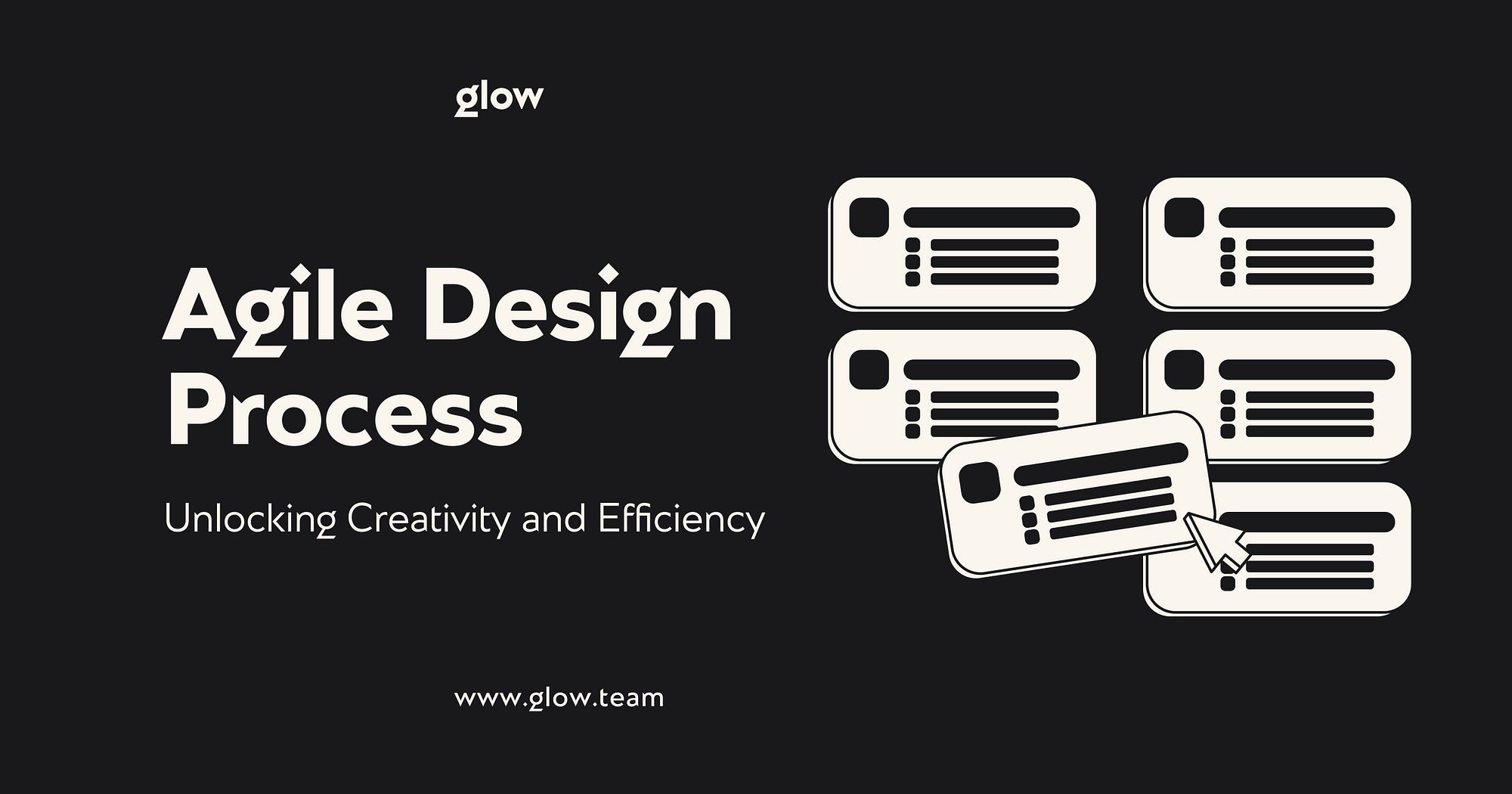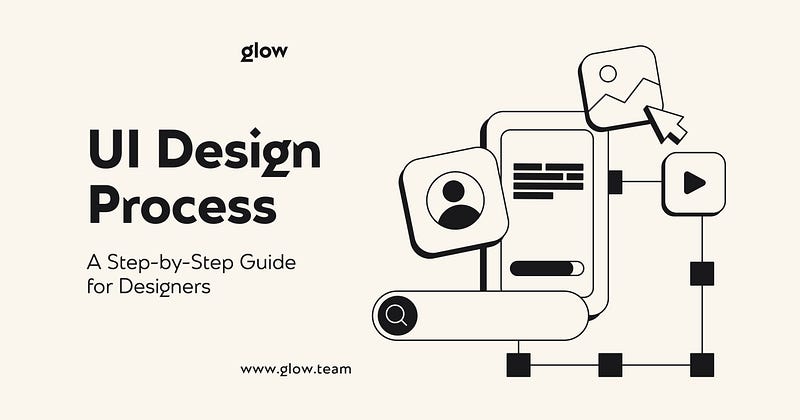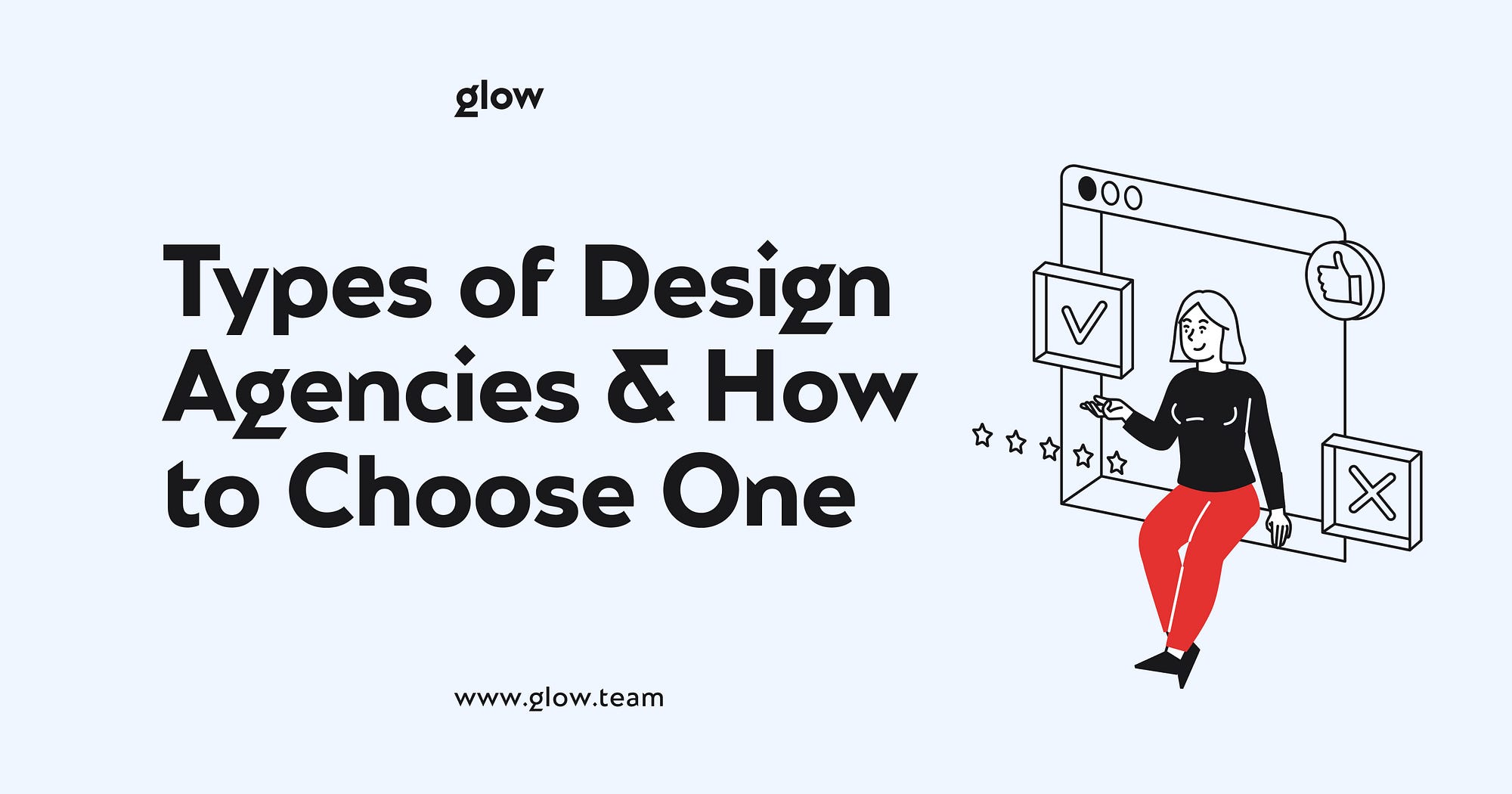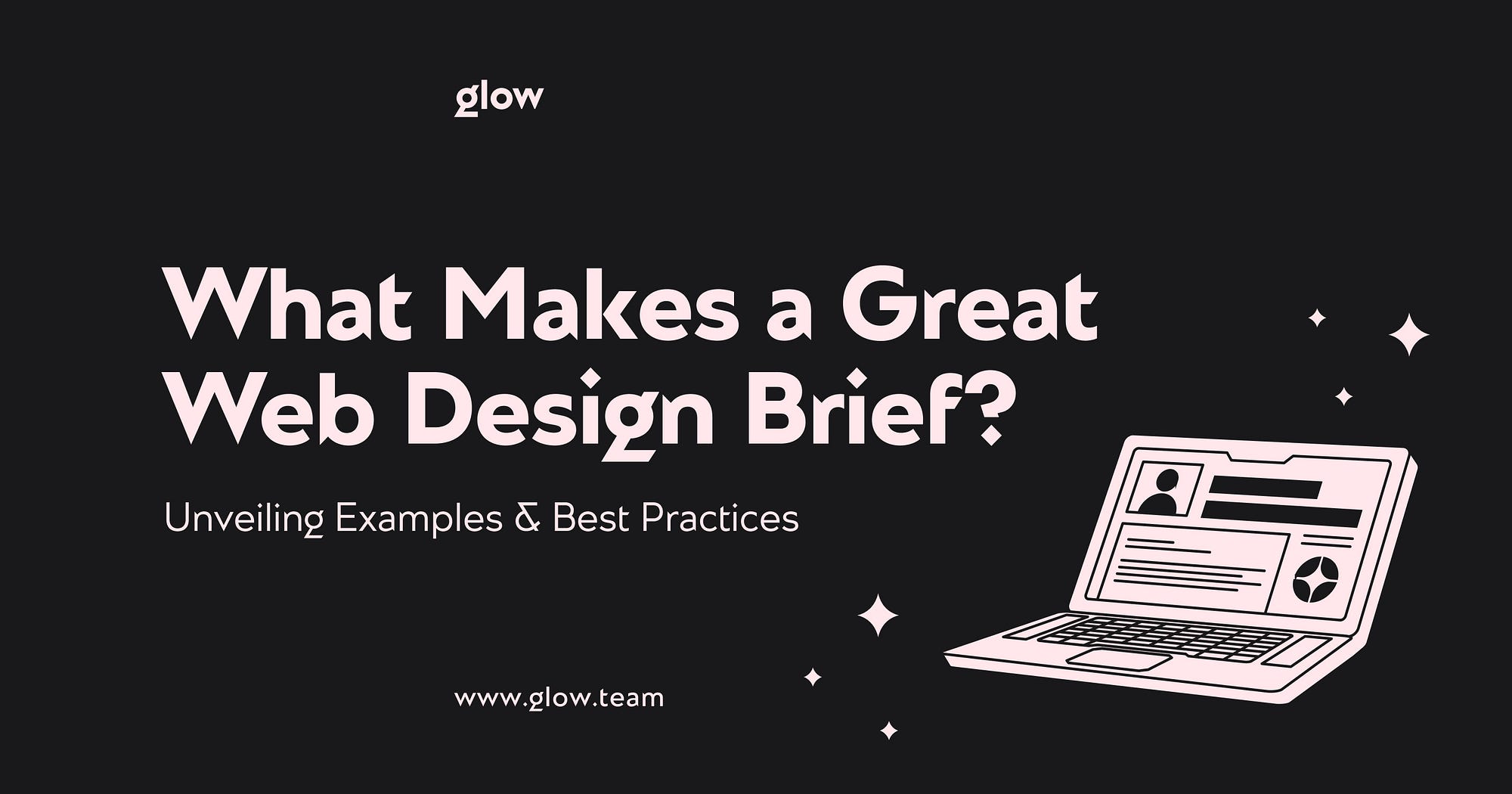In today’s design, versatility is the key to unleashing creativity and productivity. And the Glow team is just what you need in this case! The agile design process offers an agile approach that combines innovation and practicality. It’s a roadmap for those who want to navigate the ever-changing landscape of creativity and functionality.
Breaking down tasks into manageable chunks fosters a collaborative environment where ideas flow freely. Through iterative cycles, concepts are developed, adapted, and refined, ensuring that the final product matches users’ needs precisely.
We invite you to explore this issue in detail. Let’s look at all the principles and practices behind the design agility process. Each step is a catalyst for innovation. Join us and learn how this approach can change the way you approach design.
Embracing Agility in Design
Adopting the principles of flexibility in design promotes limitless creativity and efficiency. It is about:
- breaking down tasks into manageable steps
- fostering collaboration
- refining ideas through iterative cycles
Adopting an agile approach ensures that your final product is not just a design but a solution that precisely meets user needs and seamlessly adapts to changing requirements.
Agile is more than just a methodology; it’s a proactive way of thinking that propels design into the future. From rapid prototyping to continuous feedback loops, agile equips designers to navigate the ever-changing landscape, enabling them to stay ahead of the curve and deliver innovative solutions that truly resonate with users.
Overview of Agile Methodology in Design
Agile methodology in design is like a recipe for adaptability and collaboration. It breaks down tasks into smaller steps, promoting teamwork and continuous improvement. Each step is an opportunity to make adjustments and improve the final product.
With this approach, designers create quick drafts and receive frequent feedback. It allows you to respond quickly to changes. As a result, you can keep the project on track. By remaining flexible, agile design principles adapt to changing needs. So you can quickly find great user-centered solutions.
Agile isn’t just about following steps; it’s about embracing change and working together toward a common goal. It is a way of thinking that fosters innovation and ensures that design will effectively meet user needs.
The Agile Design Process: Benefits
You already understand what agile design is and how it works. But what are the actual benefits you can get from this kind of design? Let’s go into more detail:
- Task breakdown. Breaking tasks into smaller steps makes them easier to manage and adjust.
- Collaboration. Ongoing collaboration allows everyone’s ideas to be heard and incorporated.
- Rapid iterations. Designers can quickly test and refine their ideas, resulting in better results.
- User-centered design. We can say this is a user-centered agile design by prioritizing user needs and feedback. This design ensures that the final product effectively meets expectations.
How Agile Methodology Enhances Collaboration, Efficiency, and User Satisfaction
Agile is not just another product design method. It’s a unique approach that caters to the user’s perspective in multiple ways, setting it apart from traditional methods:
- Collaboration. It is regular communication and teamwork. And we have already talked about it. This method ensures that all team members contribute effectively to realizing their ideas.
- Efficiency. It is not just about breaking tasks into manageable chunks. It’s a strategy that allows teams to focus on high-priority tasks, adapt quickly to changing requirements, and ultimately deliver products faster and more effectively.
- User satisfaction. Continuous feedback in Agile allows designers to incorporate user feedback throughout the development process. It enables agile UX design.
When considered together, this is a powerful trio. With such a composition and perspective, the design will be perfect.
Agile vs. Traditional Design Processes
Agile and traditional design processes differ significantly in their approaches and outcomes:
- Agile collaboration in design:
Agile emphasizes flexibility and adaptability by breaking tasks into smaller, iterative cycles.
Agile encourages interdisciplinary collaboration and empowers team members to make decisions collectively.
Implementing Agile in design teams requires education and training to ensure everyone understands and accepts the principles and practices.
- The traditional approach in design:
Traditional methodologies follow a linear path with defined steps.
Traditional processes can lead to lengthened development cycles and potentially outdated solutions.
Strategies for Adopting Agile Practices in Design Workflows
Incorporating Agile practices into design workflows involves several vital strategies:
- First, teams should start by familiarizing themselves with Agile principles and methodologies. It will allow you to make sure everyone is on the same page.
- Second, the key to success is gradually implementing agile in design. Start with small projects, allowing your team to adapt and grow, then move on to larger projects confidently.
- Thirdly, to successfully implement Agile, fostering a culture of collaboration and open communication is crucial. Each team member’s contribution is valuable and can significantly enhance the design process.
Case studies provide valuable insight into how Agile practices have been applied in real-world settings. For example:
- A design agency improved productivity and client satisfaction by implementing Agile methodologies. It allowed them to iterate faster and adapt to client feedback.
- Another example shows how a technology startup improved product quality and reduced time to market by implementing Agile methodologies in the design process.
These examples are not just success stories; they prove the tangible benefits of implementing Agile. They could serve as a powerful inspiration for you to improve your design processes and achieve similar success.
Tools and Techniques for Agile Design
Tools and techniques for Agile design play a crucial role in streamlining the process and improving collaboration:
- Project management software such as Jira or Trello helps teams organize tasks and effectively track progress.
- Collaborative design platforms like Figma or Sketch allow for real-time collaboration and feedback gathering.
- Rapid prototyping tools like InVision or Adobe XD allow designers to quickly create and test interactive prototypes.
Daily meetings keep the team unified and informed of progress and issues. User stories help prioritize features based on user needs. These tools and techniques allow agile design implementation to work efficiently and iteratively create user-centered solutions.
The Future of Agile Design
The future of Agile design looks promising due to the constant exploration of agile design case studies and the evolution of methodologies. As industries become more interconnected and digital, Agile design will adapt. And it will meet the growing demand for flexibility and innovation.
We can expect further integration of Agile principles into design processes across industries. From software development to product design and beyond. Automation and artificial intelligence will likely play a larger role in optimizing Agile workflows. It will allow teams to focus more on creative problem-solving.
Collaboration will continue to be central to Agile design, and tools and platforms will continue to evolve to support remote and distributed teams. In addition, there will continue to be a focus on user-centeredness, and Agile teams will use data and analytics to make informed design decisions. Agile design challenges will be minimal in the future. And the potential for continuous improvement, customization, and delivering exceptional user experiences is enormous.
Predictions and Emerging Trends in Agile Methodologies for Design
Predictions and new trends in agile workflow in design are incredible. And the Glow team understands all the future trends in this field. So, find out what to expect in the future:
- Integration with design thinking. Expect deeper integration of Agile with design thinking principles, focusing on empathy and user-centered design.
- Hybrid Agile approaches. Hybrid Agile methodologies are expected to grow, combining elements of different frameworks to meet specific project requirements and team dynamics.
- Agile at scale. Organizations will increasingly adopt Agile practices at the enterprise level, scaling Agile to manage large, complex projects involving multiple teams and departments.
- Integration of AI and machine learning. Expect to integrate AI and machine learning technologies into agile design principles to automate repetitive tasks, gain valuable insights, and improve decision-making.
- Adapting remote working. Agile methodologies will continue to adapt to support remote work, emphasizing virtual collaboration tools and practices to facilitate communication and collaboration among distributed teams.
These trends signify a future in which agile collaboration in design will become more flexible, collaborative, and adaptable to meet the changing needs of teams and organizations. By embracing these trends, design teams can increase their flexibility, efficiency, and ability to create user-centered solutions in an ever-changing landscape.
Conclusion
In conclusion, our Glow Company is a beacon of innovation in Agile design. With a commitment to embracing new trends and fostering collaboration, we enable exceptional results for your designs.
With Glow Company at the helm, businesses can confidently navigate the complexities of modern design, knowing they have a partner ready to unleash creativity, increase efficiency, and ultimately succeed in an ever-changing digital landscape. Let Glow shine with you!
FAQ
What are the 5 steps of the Agile design lifecycle?
The five steps of the Agile design lifecycle are: 1. Discover: Understanding user needs. 2. Define: Defining project scope and objectives. 3. Design: Creating and iterating prototypes. 4. Develop: Building and testing the product incrementally. 5. Deliver: Launching the final product and gathering feedback.
What is the Agile engineering design process?
The Agile engineering design process involves iterative development, continuous integration, and frequent testing to deliver high-quality software solutions efficiently.
What is the design system in Agile?
In Agile, a design system is a collection of reusable components, patterns, and guidelines that ensure consistency and efficiency in design and development across projects. It promotes collaboration and accelerates the design process.





